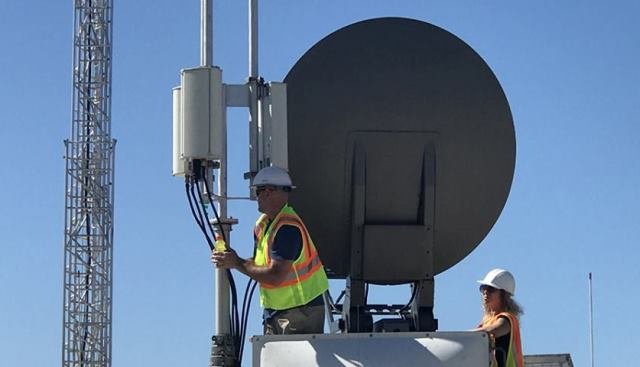UK Prime Minister Boris Johnson has ordered to drop Huawei equipment completely from Britain’s mobile network by 2027.
 Vodafone, BT / EE and Three are the customers of Huawei in the United Kingdom.
Vodafone, BT / EE and Three are the customers of Huawei in the United Kingdom.
Following is some early reaction put together by Reuters.
Federal Communications Commission Chairman Ajit Pai
“I’m pleased to see our partners in the United Kingdom take action to address the security concerns they have identified with allowing equipment from Huawei into 5G networks. There is an overwhelming consensus that Huawei is in a position to exploit network vulnerabilities and compromise critical communications infrastructure for the benefit of the Chinese Communist Party. UK has taken a necessary step to safeguard its national security as it builds out advanced networks.”
Digital Secretary Oliver Dowden
“5G will be transformative for our country, but only if we have confidence in the security and resilience of the infrastructure it is built upon.”
“Following U.S. sanctions against Huawei and updated technical advice from our cyber experts, the government has decided it is necessary to ban Huawei from our 5G networks.”
“No new kit is to be added from January 2021, and UK 5G networks will be Huawei free by the end of 2027. This decisive move provides the industry with the clarity and certainty it needs to get on with delivering 5G across the UK.”
“We are already working with all our Five Eyes partners on those alternatives,” Dowden told parliament, referring to cooperation between the group of allies comprising the U.S., Britain, Canada, Australia and New Zealand.
“The first thing we need to do is ensure that we protect the other two vendors in this market so Nokia, and Ericsson. Secondly we need to get new suppliers in, that starts with Samsung, and it starts with NEC.”
Huawei spokesman
“This disappointing decision is bad news for anyone in the UK with a mobile phone. It threatens to move Britain into the digital slow lane, push up bills and deepen the digital divide. Instead of ‘levelling up’ the government is levelling down and we urge them to reconsider. We remain confident that the new US restrictions would not have affected the resilience or security of the products we supply to the UK.
“Regrettably our future in the UK has become politicized, this is about US trade policy and not security. Over the past 20 years, Huawei has focused on building a better connected UK. As a responsible business, we will continue to support our customers as we have always done.
“We will conduct a detailed review of what today’s announcement means for our business here and will work with the UK government to explain how we can continue to contribute to a better connected Britain.”
Nokia
Finnish telecom gear maker Nokia is ready to replace Huawei equipment in Britain, the head of Nokia Britain said on Tuesday following the UK’s decision to stop using the Chinese manufacturer.
“We have the capacity and expertise to replace all of the Huawei equipment in the UK’s networks at scale and speed, and are ready to step up to support the implementation of the UK government decision with minimal impact on the people using our customers’ networks,” Cormac Whelan said.
Ericsson
Arun Bansal, president of Europe and Latin America, Ericsson
“Today’s decision removes the uncertainty that was slowing down investment decisions around the deployment of 5G in the UK. It is now time for the industry to come together and start delivering on the promise of creating a world-leading 5G network for the people, businesses and economy of the UK.
“Ericsson has the technology, experience and supply chain capacity to help accomplish this, and we stand ready to work with the UK operators to meet their timetable, with no disruption to customers.”
BT
“We note the government’s announcement today relating to the use of Huawei equipment in the UK. The security and resilience of our networks is an absolute priority for BT.
“While we have prepared for a range of scenarios, we need to further analyse the details and implications of this decision before taking a view of potential costs and impacts.”
